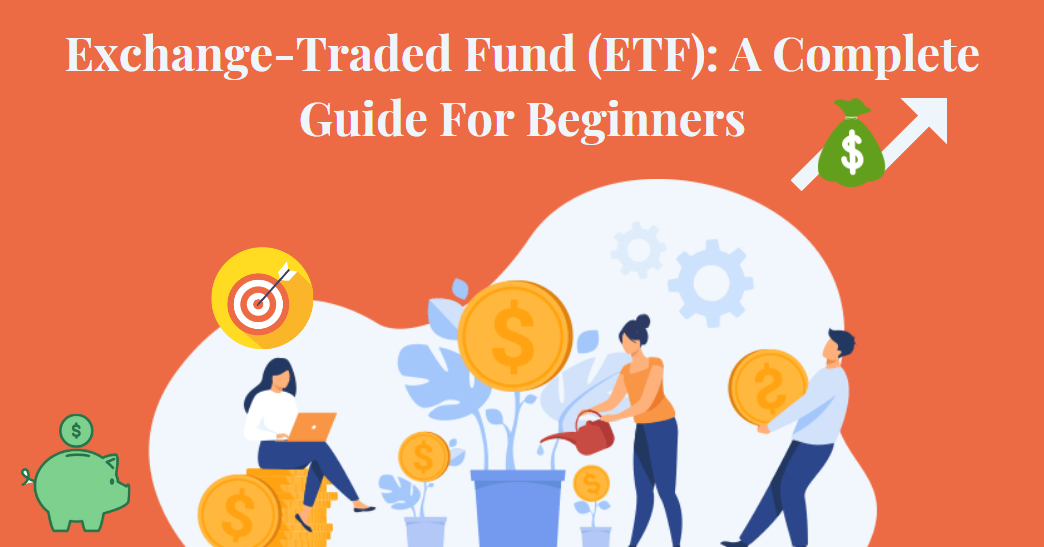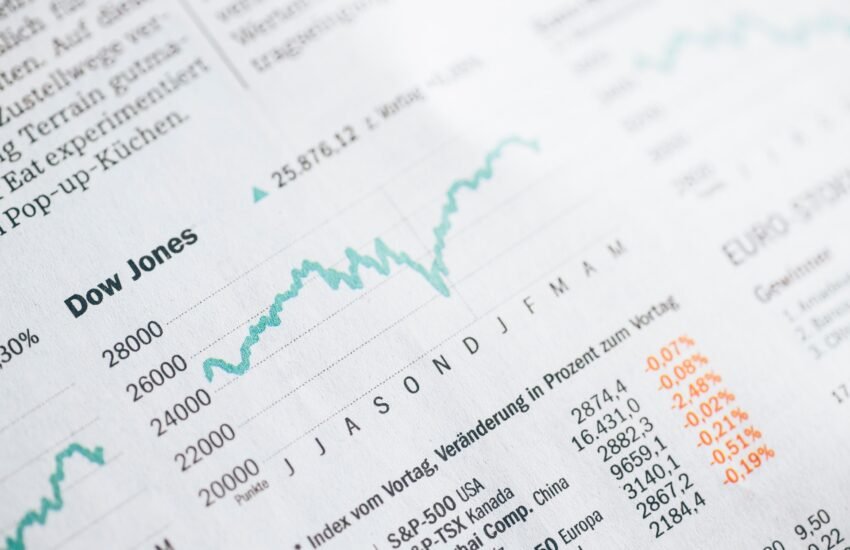Exchange-Traded Fund (ETF): A Complete Guide For Beginners
The world is expanding at a fast pace. People no longer rely solely on their savings to ensure their financial security in the future. Savings alone may not be enough to provide financial security in today’s world. Investing offers financial stability both now and in the future. It enables you to build wealth while also generating returns that outperform inflation.
ETFs, or exchange-traded funds, are a simple way to get started with investing. ETFs are easily understandable and can produce excellent returns with little cost or effort. Exchange-traded funds (ETFs) are increasingly being used by investors to diversify their portfolios. Here in this article we will understand what an ETF is, their types and many more. So, keep on reading.
What Is An Exchange-Traded Fund?
An exchange traded fund, or ETF, is a collection of investments such as bonds and stocks. ETFs often track a certain index, sector, commodity, or other asset, unlike in mutual funds, they can be bought and sold on a stock exchange just like any other stock. An ETF can be designed to track anything from a single commodity’s price to a huge and diversified group of commodities. Investors can acquire a large number of stocks or bonds at once with an exchange-traded fund, or ETF. ETF shares, like individual stocks, are traded throughout the day at prices that fluctuate according to supply and demand. When compared to mutual funds, ETFs are less expensive and have better liquidity.
What Are The Types Of ETFs?
There are a number of types of ETFs. Some of the most common types of ETFs on the market today are listed below.
Stock ETFs
ETFs that track a single industry or sector are called stock (equity) ETFs. They are made up of a basket of stocks. These are stocks that are intended for long-term growth. Even when they are less risky than individual stocks, they are riskier than some of the other ETFs, such as bond ETFs.
Commodity ETFs
Commodity exchange-traded funds (ETFs) invest in commodities such as crude oil and gold. These are an appropriate option to stocks for diversifying your portfolio and reducing risk. Commodity exchange-traded funds, on the other hand, are much less transparent than index or stock exchange-traded funds. They frequently employ derivatives rather than owning the underlying asset, such as gold. Derivatives track the actual price of the commodity, but they involve greater risk, like counterparty risk, than just an ETF that directly owns the underlying asset.
Bond ETFs
These are standard ETFs that aim to give investors exposure to various bond kinds. Bonds are a smart method to diversify a portfolio and lessen the risks associated with investing. Bond ETFs are utilized to give investors consistent income. The distribution of their income is determined by the performance of the underlying bonds. Government bonds, corporate bonds, and state and local bonds, often known as municipal bonds, are examples. Bond ETFs, despite their underlying assets, do not have a set maturity date. They usually trade at a discount or premium to the actual bond price.
Sector ETFs
Sector ETFs allow you to invest in particular companies within specific sectors, like health care, finance, or the industrial sector. These are particularly valuable for investors monitoring business cycles, as some sectors perform much better during expansions and the others perform well in contractions. These are frequently riskier than broad-market ETFs.
Currency ETFs
These securities enable investors to take part in currency market transactions without having to buy a specific currency. The goal of these investments is to analyze and profit from fluctuations in the price of a single currency or a basket of currencies.
Passive And Active ETFs
ETFs are classified as passive or actively managed in general. Passive ETFs are designed to mimic the performance of a broader index, like the S&P 500, or a more specialized targeted industry or trend. Actively managed ETFs do not normally track an index of securities, instead relying on portfolio managers to choose which securities to include in the portfolio. These funds offer advantages than passive ETFs, but they are typically more expensive for investors.
Inverse ETFs
An inverse ETF is a type of exchange-traded fund (ETF) that profits from a drop in the value of an underlying benchmark through using multiple derivatives. Inverse ETFs are comparable to short positions, which entail borrowing securities and selling them in the intention of buying back them at a reduced price. A “Short ETF” or “Bear ETF” is another name for an inverse ETF. Risk-averse investors should avoid inverse ETFs since they carry several hazards. This ETF is particularly fit for sophisticated, risk-averse investors who are willing to accept the hazards associated with inverse ETFs.
Leveraged ETFs
A leveraged exchange-traded fund (ETF) is a marketable security that boosts the returns of an underlying index by using financial derivatives and debt. A leveraged exchange-traded fund may aim for a 2:1 or 3:1 ratio, whereas a regular exchange-traded fund normally tracks the securities in its underlying index one-to-one.Such ETFs are extremely risky.
What Are The Advantages and Disadvantages Of ETFs?
Advantages-
- ETFs offer low-cost access to a wide range of stocks, bonds, and other assets.
- ETFs are often more liquid that is easier to purchase and sell than mutual funds. With only a few mouse clicks, online brokers make buying and selling ETFs straightforward.
- Individual bonds might be difficult to invest in, however a bond ETF may make the fixed-income part of your portfolio quite simple.
- ETFs are cost-effective investments as the expense ratios are low, and broker commissions are minimal.
- Risk management by diversification.
Disadvantages-
- Because ETFs own a diverse range of stocks, they don’t offer the same level of return as purchasing individual stocks.
- Fees for actively managed ETFs are higher.
- Transactions are hindered due to a lack of liquidity.
- Diversification is limited with ETFs that focus on a single industry.
- While ETFs are frequently low-cost, they are not always free. You do not have to pay management fees if you purchase a portfolio of individual stocks on your own.
How Do ETFs Work?
ETFs work as follows: An ETF provider produces an ETF based on the specific methodology and sells shares of the fund to investors. The ETF’s constituent securities are purchased and sold by the provider. Despite the fact that investors do not own the underlying assets, they may still be qualified for dividends, reinvestments, and some other benefits. You can invest in some of the popular ETFs on the market today such as The SPDR S&P 500 (SPY), The SPDR Dow Jones Industrial Average (DIA), The iShares Russell 2000 (IWM).
Mutual Funds vs. ETFs
Because the core concept is about the same, one popular question is just how ETFs vary from mutual funds. So here are a few important distinctions between ETFs and mutual funds.
ETFs are a sort of index fund that tracks a basket of securities. Mutual funds, on the other hand, are a collection of investments in bonds, securities, and other assets that provide returns.
ETFs, like stocks, are traded during normal market hours. But Mutual funds can only be redeemed at the end of the day of trading. Because ETFs do not impose marketing fees, they are less expensive than mutual funds and can be acquired commission-free. However, while some mutual funds do not charge load fees, the majority of them are higher expensive than ETFs due to administrative and marketing costs.
ETF prices can fluctuate at a premium or a loss to the fund’s net asset value (NAV). While mutual fund prices are based on the total fund’s net asset value. ETFs diversify risk by monitoring multiple companies in a single area or industry. The mutual funds diversify risk by constructing a portfolio which spans a variety of asset classes and security instruments.
How To Invest In ETFs?
There are a number of ways to invest in exchange traded funds. The most frequent approach for individual investors to purchase and sell ETFs is via a broker, as ETF shares trade as stocks. Investors can use brokerage accounts to trade ETFs manually or by a passive strategy like a robo-advisor. Investors who want a more hands-on approach should look for funds to buy in the rapidly developing ETF market, taking into consideration that certain ETFs are built for long-term investing while others are made to be bought and sold over just a short period of time.
Stocks, bonds, commodities, foreign currency, oil futures, and other assets are included in ETFs. ETFs can be bought, traded, and transferred in the same way that stocks can. It’s entirely up to you to decide which ETF to invest in. Consider your investment objectives and the level of risk you’re willing to accept to achieve them. Investors should consider their investment strategy and objectives carefully before taking the next actions.




